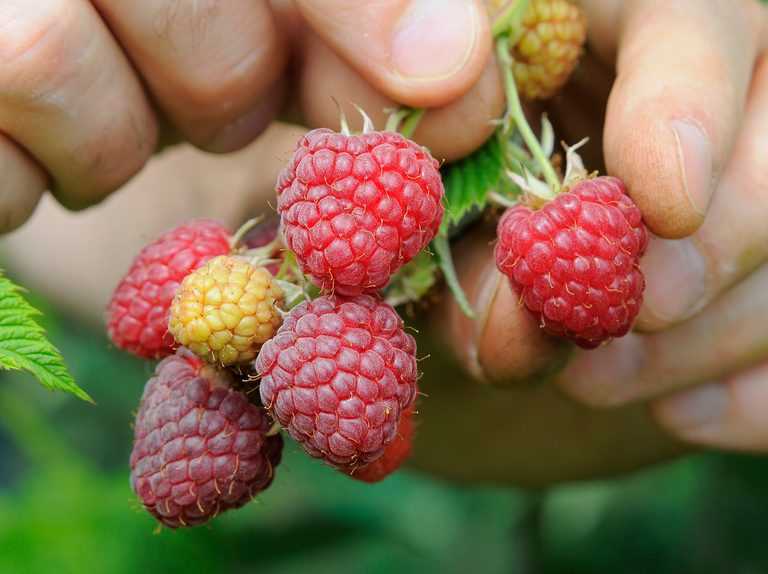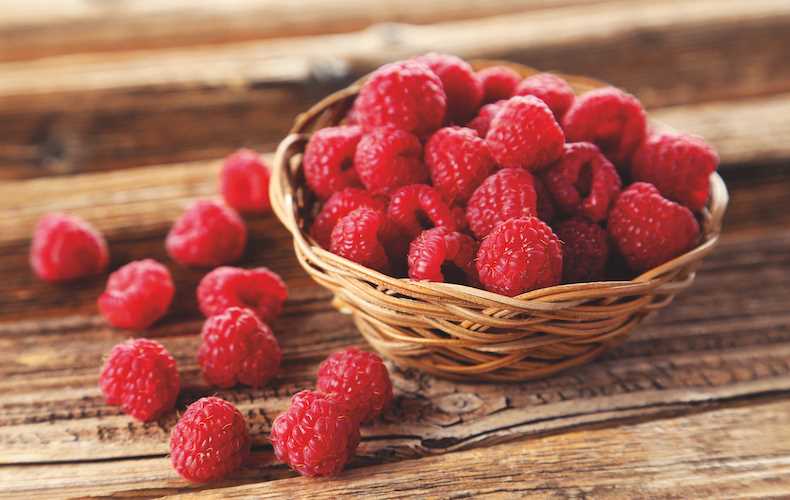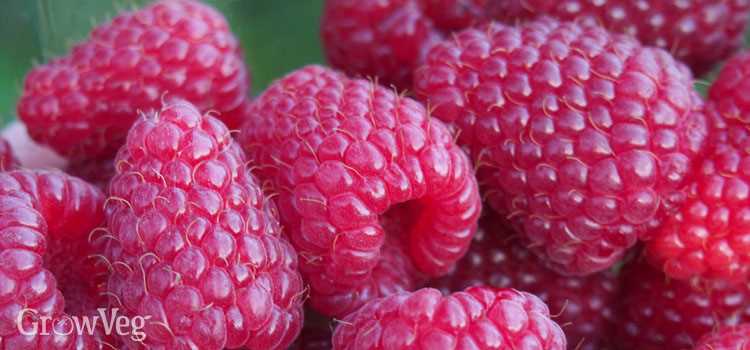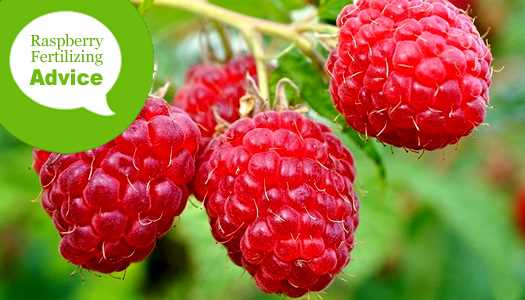- Why August and September are Important for Raspberries
- 1. Fruit Development
- 2. Nutrient Requirements
- 3. Pest and Disease Control
- 4. Pruning and Maintenance
- 5. Harvesting
- Benefits of Using Fertiliser on Raspberries
- 1. Nutrient Supplementation
- 2. Increased Fruit Production
- 3. Enhanced Berry Quality
- 4. Disease Resistance
- 5. Long-Term Plant Health
- Conclusion
- Choosing the Right Fertiliser for Raspberries
- 1. Nutrient Composition
- 2. Slow-Release vs. Water-Soluble
- 3. Organic vs. Synthetic
- 4. Micronutrients
- 5. Application Timing
- 6. Soil pH
- Timing is Key: When to Apply Fertiliser to Raspberries
- Early Spring
- Mid to Late Spring
- Post-Harvest
- Avoid Fertilising in August and September
- How to Apply Fertiliser to Raspberries
- 1. Timing
- 2. Choose the Right Fertiliser
- 3. Spread the Fertiliser
- 4. Water the Plants
- 5. Repeat Application
- 6. Monitor Plant Health
- Common Mistakes to Avoid When Fertilising Raspberries
- 1. Over-fertilising
- 2. Using the wrong type of fertiliser
- 3. Applying fertiliser at the wrong time
- 4. Neglecting soil pH
- 5. Fertilising too close to the plants
- 6. Not providing enough water
- Monitoring the Results: Evaluating the Effectiveness of Fertiliser
- 1. Visual Observation
- 2. Fruit Size
- 3. Yield
- 4. Soil Nutrient Testing
- 5. Plant Health
- 6. Cost Analysis
- Other Tips for Growing Healthy Raspberries
- Question-answer:
- Is August and September a good time to fertilize raspberries?
- What is the best fertilizer for raspberries in August and September?
- Can I use compost as a fertilizer for raspberries in August and September?
- How often should I fertilize raspberries in August and September?
- Are there any organic fertilizers that I can use for raspberries in August and September?
- Video: Planting and Building a Trellis for Raspberries
When it comes to growing raspberries, many gardeners strive for large, juicy berries. However, there are times when smaller berries are desired, such as when baking pies or making jam. In August and September, it is important to use the right fertiliser to achieve this goal.
One of the best fertilisers for raspberries in late summer and early fall is a high-potassium blend. Potassium is essential for fruit development and can help ensure that the berries stay small. Look for a fertiliser with a high potassium content, such as a 10-10-10 or 15-15-15 blend.
It is important to apply the fertiliser at the proper time for optimal results. In August and September, raspberries are entering their final stages of fruit development. Applying the fertiliser at this time will provide the plants with the nutrients they need to produce small, flavorful berries.
Another benefit of using a high-potassium fertiliser is that it can help improve the overall health of the raspberry plants. Potassium helps strengthen the plants’ immune system, making them less susceptible to diseases and pests. This can result in higher yields and healthier plants in the long run.
Why August and September are Important for Raspberries
Raspberries are a popular fruit that provides a delicious addition to many dishes. However, in order to ensure the best quality berries, it is important to pay attention to the care and maintenance of raspberry plants, especially in the months of August and September.
1. Fruit Development
August and September are crucial months for raspberry plants as they are the period when the fruits are developing and ripening. During this time, the focus of care should be on providing the necessary nutrients to support healthy fruit growth.
2. Nutrient Requirements
Raspberries have specific nutrient requirements that need to be met in order to ensure optimal growth and fruit development. During August and September, it is important to provide a balanced fertilizer that contains essential nutrients such as nitrogen, phosphorus, and potassium.
A balanced fertilizer with a ratio of 10-10-10 or similar is generally recommended for raspberries. This will provide the necessary nutrients for healthy plant growth and fruit development.
3. Pest and Disease Control
August and September are also important months for pest and disease control in raspberry plants. Regular inspections should be carried out to identify any signs of pests or diseases such as spider mites, aphids, or powdery mildew.
If any pests or diseases are detected, appropriate measures should be taken to control and prevent their spread. This may include using natural or chemical controls, depending on the severity of the infestation.
4. Pruning and Maintenance
August and September are also the ideal time for pruning and maintenance of raspberry plants. Pruning helps to maintain the shape of the plants and encourages new growth for the next season.
During this time, any dead or damaged canes should be removed, and the remaining canes should be pruned to a height of around 4-5 feet. This will help to promote better air circulation, reduce the risk of diseases, and improve fruit production.
5. Harvesting
Finally, August and September are the months when raspberries are ready for harvest. Regular monitoring of the fruit is essential to determine the right time for picking. Ripe raspberries will have a deep color, easily detach from the plant, and be slightly soft to the touch.
It is important to harvest raspberries at the peak of ripeness to ensure the best flavor and quality. Overripe or underripe berries should be avoided as they may not have the desired taste or texture.
In conclusion, August and September are critical months for the care and maintenance of raspberry plants. By providing the right nutrients, controlling pests and diseases, pruning, and harvesting at the right time, you can ensure a bountiful and delicious raspberry crop.
Benefits of Using Fertiliser on Raspberries

Using fertiliser on raspberries can provide several key benefits, helping to improve the health and productivity of your plants. Here are some of the main advantages:
1. Nutrient Supplementation
Fertilisers are specially formulated to provide essential nutrients that raspberries need to grow and thrive. These nutrients include nitrogen, phosphorus, and potassium, as well as micronutrients like iron, magnesium, and zinc. By supplementing the soil with these nutrients, you can ensure that your raspberry plants have everything they need to produce healthy berries.
2. Increased Fruit Production
Properly fertilised raspberry plants tend to produce more fruit than those that are not fertilised. This is because the added nutrients in the fertiliser help to enhance the plants’ overall growth and development. With a healthy and robust raspberry plant, you can expect a higher yield of delicious berries.
3. Enhanced Berry Quality
Fertilisers can also improve the quality of raspberries by promoting better fruit development and taste. The right balance of nutrients in the soil can lead to larger, juicier, and more flavorful berries. Additionally, fertilisers can help prevent common issues like small or misshapen berries, ensuring that your raspberries are of the highest quality.
4. Disease Resistance
By providing raspberry plants with the necessary nutrients, fertilisers can help boost their immune systems and make them more resistant to diseases and pests. This is because healthy plants are better able to withstand attacks from pathogens and insects, leading to a lower risk of damage and higher overall plant health.
5. Long-Term Plant Health
Regularly using fertilisers on raspberries can contribute to their long-term health and vitality. By providing ongoing access to essential nutrients, you can support the plants’ overall growth, improve their ability to withstand environmental stressors, and extend their lifespan. This can result in years of productive raspberry harvesting.
Conclusion
Using fertiliser on raspberries offers numerous benefits, including nutrient supplementation, increased fruit production, enhanced berry quality, disease resistance, and long-term plant health. By incorporating fertilisers into your raspberry care routine, you can maximize the yield and enjoyment of your raspberry plants.
Choosing the Right Fertiliser for Raspberries
Growing raspberries can be a rewarding experience, but to ensure healthy plant growth and a bountiful harvest, it’s essential to provide them with the right nutrients. Choosing the right fertiliser for your raspberries will help them thrive and produce delicious berries. Here are a few factors to consider when selecting a fertiliser for your raspberry plants:
1. Nutrient Composition
Look for a fertiliser that provides a balanced blend of essential nutrients for raspberry plants. Raspberries require nitrogen, phosphorus, and potassium (NPK) to support their growth and fruit production. A well-balanced fertiliser will have equal or similar ratios of these nutrients, such as a 10-10-10 or 12-12-12 formulation.
2. Slow-Release vs. Water-Soluble
Consider whether you prefer a slow-release or water-soluble fertiliser. Slow-release fertilisers gradually release nutrients over time, providing a steady supply to the plants. This can be beneficial as it reduces the risk of over-fertilisation. Water-soluble fertilisers, on the other hand, allow for quick nutrient absorption but may require more frequent application.
3. Organic vs. Synthetic
Decide whether you want to use organic or synthetic fertilisers. Organic fertilisers are derived from natural sources and are often more environmentally friendly. They release nutrients slowly, improving soil health over time. Synthetic fertilisers are chemically formulated and provide nutrients in a readily available form. They can be applied in specific ratios to meet the plant’s needs.
4. Micronutrients
In addition to the primary nutrients (NPK), raspberries also benefit from micronutrients such as iron, zinc, and manganese. These minerals play crucial roles in plant growth and fruit development. Look for a fertiliser that includes these micronutrients, either in its formulation or as a separate supplement.
5. Application Timing
Consider when you plan to apply the fertiliser. For raspberries, it is often recommended to apply fertiliser in early spring, just before new growth starts. This helps provide the necessary nutrients for the plant’s initial growth phase. However, if your soil is lacking in nutrients, a mid-season or fall application may also be beneficial.
6. Soil pH
Raspberry plants prefer slightly acidic soil with a pH range of 5.5 to 6.5. Before applying any fertiliser, it’s essential to test your soil’s pH level. If the soil is too acidic or alkaline, it can affect nutrient availability. Adjusting the soil pH to the correct range can help optimize nutrient uptake.
By considering these factors, you can choose the right fertiliser for your raspberry plants. Regular fertilisation will provide the necessary nutrients for healthy plant growth, increased berry production, and delicious raspberries for enjoying fresh or preserving for later use.
Timing is Key: When to Apply Fertiliser to Raspberries
Raspberries are a popular fruit grown in many home gardens, and proper fertilisation is essential to ensure healthy plant growth and a bountiful harvest. While there is no one-size-fits-all approach to fertilising raspberries, understanding the optimal timing for application can greatly improve their overall health and productivity.
Early Spring
The first application of fertiliser should be done in early spring, around late February or early March, depending on the climate and region. This timing is crucial as it allows the plants to absorb the nutrients before they start their vigorous growth cycle. A balanced fertiliser with equal amounts of nitrogen, phosphorus, and potassium (NPK) is ideal for this initial application.
Mid to Late Spring
Raspberries continue to grow and develop during mid to late spring, so a second round of fertiliser can be applied around late April or early May. This application should focus more on nitrogen, as it promotes vegetative growth. Adding a higher ratio of nitrogen-rich fertiliser, such as one with a higher first number in the NPK ratio (e.g., 10-5-5), can help encourage strong canes and lush foliage.
Post-Harvest
After the raspberry harvest, typically in late summer or early fall, plants can be fertilised again to replenish their nutrient stores and promote healthy growth for the following year. This time, the fertiliser should be high in potassium and phosphorus, which encourages root and fruit development. A fertiliser with a higher ratio of the last two numbers in the NPK ratio (e.g., 5-10-10) is recommended for this application.
Avoid Fertilising in August and September

It is important to note that fertilising raspberries in August and September with a fertiliser high in nitrogen can lead to oversized berries. If you want to keep the berries small, it is best to avoid fertilising during this time. Instead, focus on providing adequate water and ensuring the plants receive plenty of sunlight.
Overall, timing is key when it comes to fertilising raspberries. By understanding the different stages of the plant’s growth cycle and applying the right nutrients at the right time, you can help ensure healthy raspberry plants and a delicious harvest year after year.
How to Apply Fertiliser to Raspberries
Fertilising raspberries is an important part of maintaining healthy plants and ensuring a fruitful harvest. Here are some steps to follow when applying fertiliser to your raspberry plants:
1. Timing
The timing of fertiliser application is crucial. It is recommended to fertilise raspberry plants in early spring before new growth begins. This will provide the plants with the necessary nutrients they need to thrive during the growing season.
2. Choose the Right Fertiliser
There are various types of fertilisers available on the market. It is essential to choose a balanced fertiliser that contains nitrogen, phosphorous, and potassium. Look for a fertiliser with an NPK ratio of 10-10-10 or 14-14-14.
3. Spread the Fertiliser

Once you have selected the appropriate fertiliser, spread it evenly around the base of the raspberry plants. Be cautious not to apply the fertiliser directly onto the plant stems, as it can cause damage. Use a rake or hoe to gently work the fertiliser into the soil, ensuring it is well-distributed.
4. Water the Plants
After applying the fertiliser, water the raspberry plants thoroughly. This will help to dissolve the fertiliser and allow the nutrients to penetrate the root zone. Aim to water deeply, ensuring the soil is moist but not waterlogged.
5. Repeat Application
For established raspberry plants, repeat the fertiliser application every 4-6 weeks during the growing season. This will provide a continuous supply of nutrients to support plant growth and berry development.
6. Monitor Plant Health
Regularly monitor the health of your raspberry plants following fertiliser application. Look for signs of nutrient deficiencies or excesses, such as yellowing leaves or stunted growth. Adjust your fertilisation routine accordingly, if necessary.
Remember, proper fertilisation is just one aspect of raspberry plant care. It is also important to provide adequate sunlight, water, and weed control to ensure healthy and fruitful plants.
Common Mistakes to Avoid When Fertilising Raspberries
Fertilising raspberries properly is essential for promoting healthy growth and high yields. However, there are some common mistakes that many gardeners make when applying fertiliser to their raspberry plants. Avoiding these mistakes can help ensure that your raspberries thrive and produce an abundance of delicious berries.
1. Over-fertilising
One of the biggest mistakes gardeners make when fertilising raspberries is applying too much fertiliser. Over-fertilising can lead to excessive vegetative growth and weakens the plants, making them more susceptible to diseases and pests. It’s important to follow the recommended application rates provided by the manufacturer and err on the side of caution when applying fertiliser.
2. Using the wrong type of fertiliser

Raspberries have specific nutrient requirements, and using the wrong type of fertiliser can result in poor growth and low yields. Avoid using fertilisers that are high in nitrogen, as this can promote excessive leaf growth at the expense of fruit production. Instead, choose a balanced fertiliser with a ratio of nutrients that is suitable for raspberries, such as a 10-10-10 or 14-14-14 formulation.
3. Applying fertiliser at the wrong time
The timing of fertiliser application is crucial for raspberries. Applying fertiliser too early in the growing season can encourage rapid growth, which may make the plants more susceptible to winter damage. On the other hand, applying fertiliser too late in the season can promote vegetative growth instead of fruit development. It’s best to follow a fertilisation schedule that takes into account the specific nutrient needs of raspberries at different stages of growth.
4. Neglecting soil pH
Raspberries prefer a slightly acidic soil pH of around 5.5 to 6.5. Neglecting to test and adjust the soil pH can result in nutrient deficiencies, even if you are applying the correct amount and type of fertiliser. Before fertilising, it’s a good idea to test the soil pH and make any necessary adjustments by adding lime to raise pH or elemental sulfur to lower pH.
5. Fertilising too close to the plants
When applying fertiliser, avoid spreading it too close to the stems of raspberry plants. This can cause fertilizer burn and damage the delicate roots. Instead, spread the fertiliser evenly in a wide band around the base of the plants, taking care not to pile it up against the stems.
6. Not providing enough water
Proper watering is essential for activating and distributing nutrients in the soil. After applying fertiliser, make sure to water your raspberry plants thoroughly to help the nutrients penetrate the soil and reach the roots. Inadequate watering can hinder the effectiveness of fertilisers and lead to nutrient deficiencies.
Avoiding these common mistakes when fertilising raspberries can help ensure that your plants stay healthy, produce an abundance of berries, and provide you with a bountiful harvest. By following proper fertilisation practices, you can enjoy the sweet taste of homegrown raspberries all season long.
Monitoring the Results: Evaluating the Effectiveness of Fertiliser
After applying the chosen fertiliser to your raspberry plants in August and September, it is important to monitor and evaluate the results to determine the effectiveness of the fertiliser. This will help you make informed decisions for future fertilisation practices and ensure the health and productivity of your raspberry plants.
1. Visual Observation
One way to evaluate the effectiveness of the fertiliser is through visual observation of the raspberry plants. Monitor the overall plant growth, leaf color, and fruit development. Look for signs of improved growth, such as lusher foliage and increased fruit set.
2. Fruit Size
Assess the size of the raspberries to determine if the fertiliser is achieving the desired effect of keeping the berries small. Measure the diameter or weight of the berries to compare them with previous years’ harvests. If the berries are smaller as a result of the fertiliser, it indicates that it is working effectively.
3. Yield
Measure the overall yield of raspberries from the fertilised plants. Compare the yield with previous years’ harvests to see if there is an increase in productivity. A higher yield can indicate that the fertiliser is promoting better fruit set and development.
4. Soil Nutrient Testing
Conduct soil nutrient testing to determine if the fertiliser has effectively supplied the required nutrients to the plants. Test for essential nutrients such as nitrogen, phosphorus, and potassium, as well as any other nutrients that may have been included in the fertiliser. If the nutrient levels are within the recommended range, it indicates that the fertiliser is providing adequate nutrition to the raspberry plants.
5. Plant Health
Monitor the overall health of the raspberry plants, including disease resistance and pest infestation. Healthy plants are better equipped to utilize the nutrients provided by the fertiliser. If the plants show improved health and resilience, it suggests that the fertiliser is contributing to their overall well-being.
6. Cost Analysis
Consider the cost of the fertiliser and weigh it against the benefits observed. Calculate the cost per plant or per fruit produced to determine if the fertiliser is cost-effective. If the chosen fertiliser provides noticeable improvements in plant growth and yield, it may be worth the investment.
By evaluating the effectiveness of the fertiliser through these methods, you can make informed decisions about your fertilisation practices and ensure the continued health and productivity of your raspberry plants.
Other Tips for Growing Healthy Raspberries
- Planting: Choose a sunny location with well-drained soil for your raspberry plants. Prepare the soil by removing weeds and adding compost or organic matter to improve its texture and fertility.
- Watering: Raspberries need regular watering, especially during dry periods. Provide them with about 1 inch of water per week, either through rainfall or irrigation. Avoid overwatering, as it can lead to root rot.
- Pruning: Prune your raspberry plants in early spring before new growth begins. Remove any dead, damaged, or diseased canes, as well as weak or overcrowded ones. This will promote better air circulation and reduce the risk of fungal diseases.
- Weed control: Keep the area around your raspberry plants free from weeds, as they can compete for nutrients and water. Use mulch to suppress weed growth and conserve soil moisture.
- Pest and disease management: Monitor your raspberry plants regularly for signs of pests or diseases. Common problems include aphids, spider mites, powdery mildew, and raspberry fruitworm. Take appropriate measures to control these issues, such as using insecticidal soaps or organic pest controls.
- Support: Depending on the variety, raspberries can benefit from support systems like trellises, stakes, or wire frames. These structures help keep the canes upright, prevent them from bending or breaking under the weight of the fruit, and make harvesting easier.
- Harvesting: Harvest your raspberries when they are fully ripe and easily detach from the plant. This is usually indicated by their color and firmness. Avoid picking them when they are still red and hard, as they won’t be fully sweet and flavorful.
Question-answer:
Is August and September a good time to fertilize raspberries?
Yes, August and September are ideal months to fertilize raspberries to keep the berries small. This is because the plants require an extra boost of nutrients during this period to support fruit development.
What is the best fertilizer for raspberries in August and September?
The best fertilizer for raspberries during this time is one that is high in potassium. Potassium promotes fruit development and helps keep the berries small and flavorful. A good option is a fertilizer with a balanced NPK ratio such as 10-10-10 or a potassium-rich fertilizer like 0-0-50. It’s important to follow the manufacturer’s instructions for application rates.
Can I use compost as a fertilizer for raspberries in August and September?
Yes, compost can be used as a fertilizer for raspberries during this time. Compost is rich in organic matter and nutrients, which can benefit the plants. It’s best to apply compost in a thin layer around the base of the plants, taking care not to bury the stems. This will provide a slow release of nutrients to support fruit development.
How often should I fertilize raspberries in August and September?
Raspberries should be fertilized once in August and once in September. This will provide the plants with the extra nutrients they need during this crucial period of fruit development. It’s important not to over-fertilize, as this can lead to excessive vegetation growth and poor fruit quality.
Are there any organic fertilizers that I can use for raspberries in August and September?
Yes, there are several organic fertilizers that can be used for raspberries during this time. Some options include well-rotted manure, compost tea, fish emulsion, and seaweed extract. These organic fertilizers provide a range of nutrients and can help keep the berries small and flavorful. It’s important to follow the manufacturer’s instructions for application rates.







